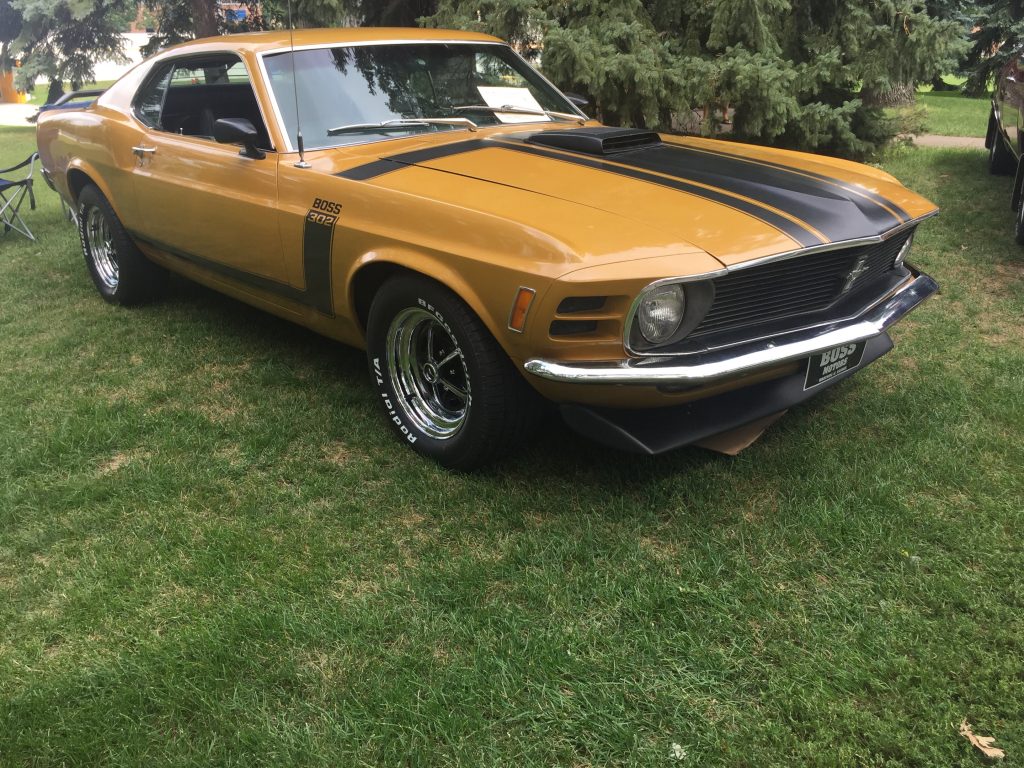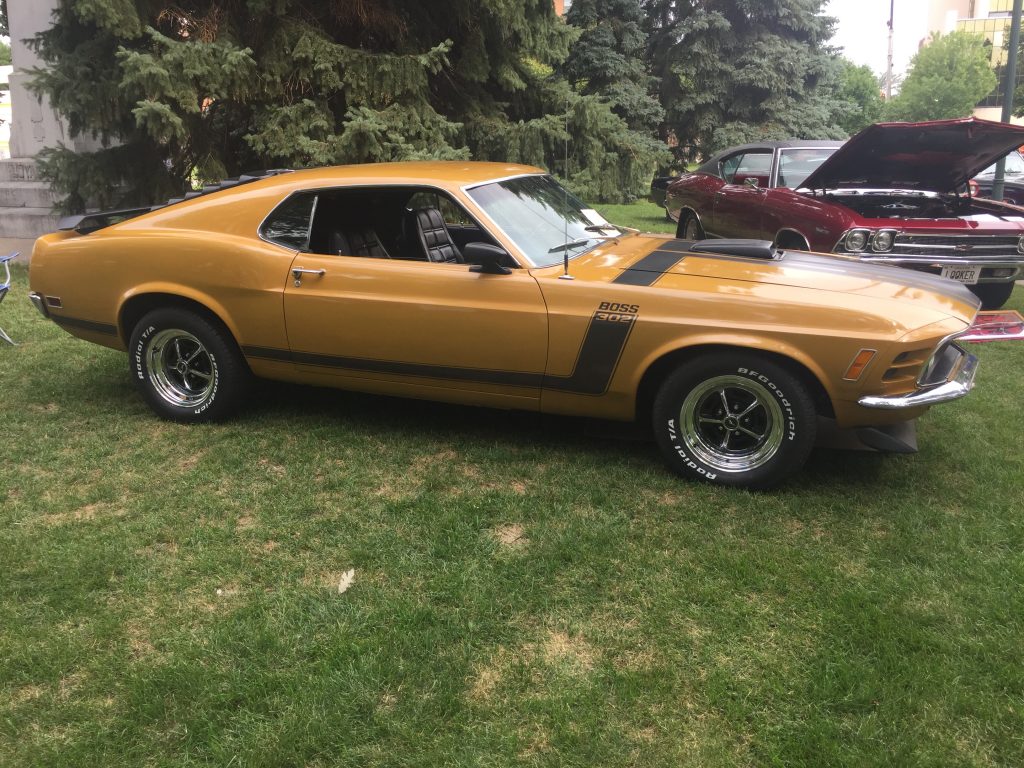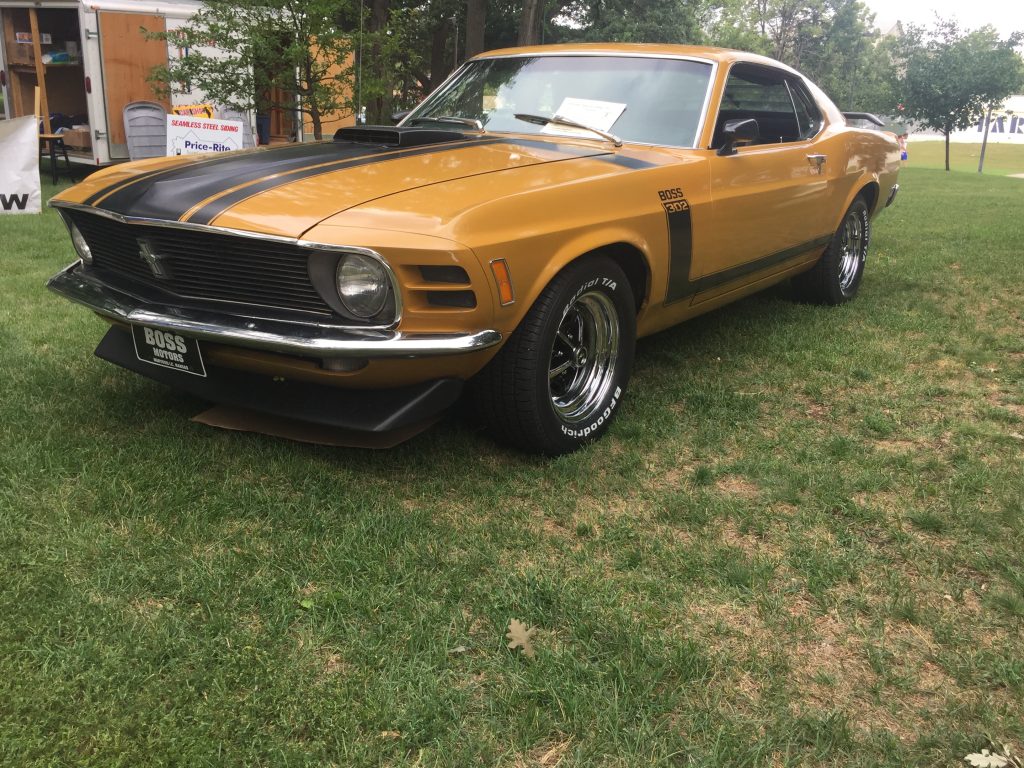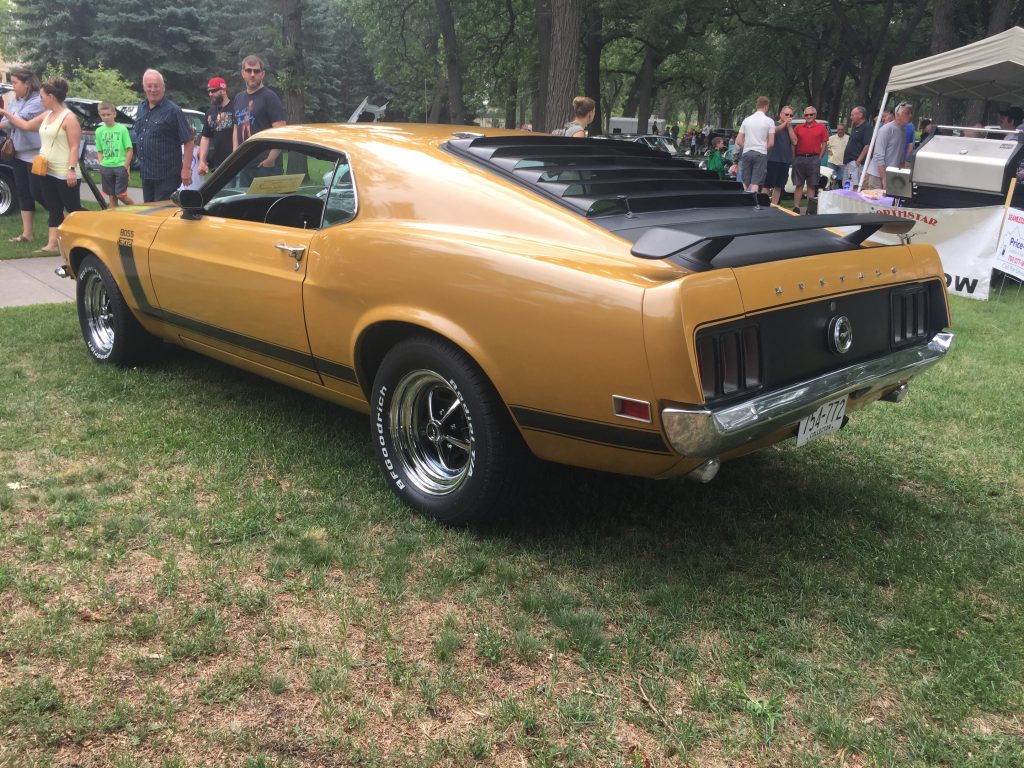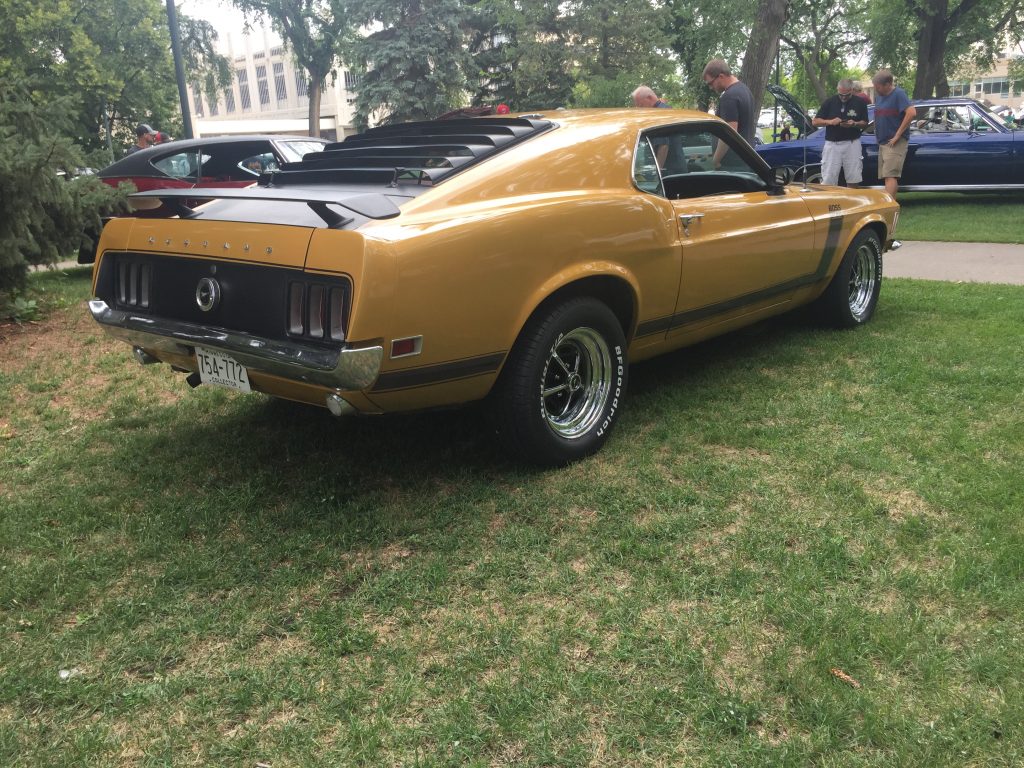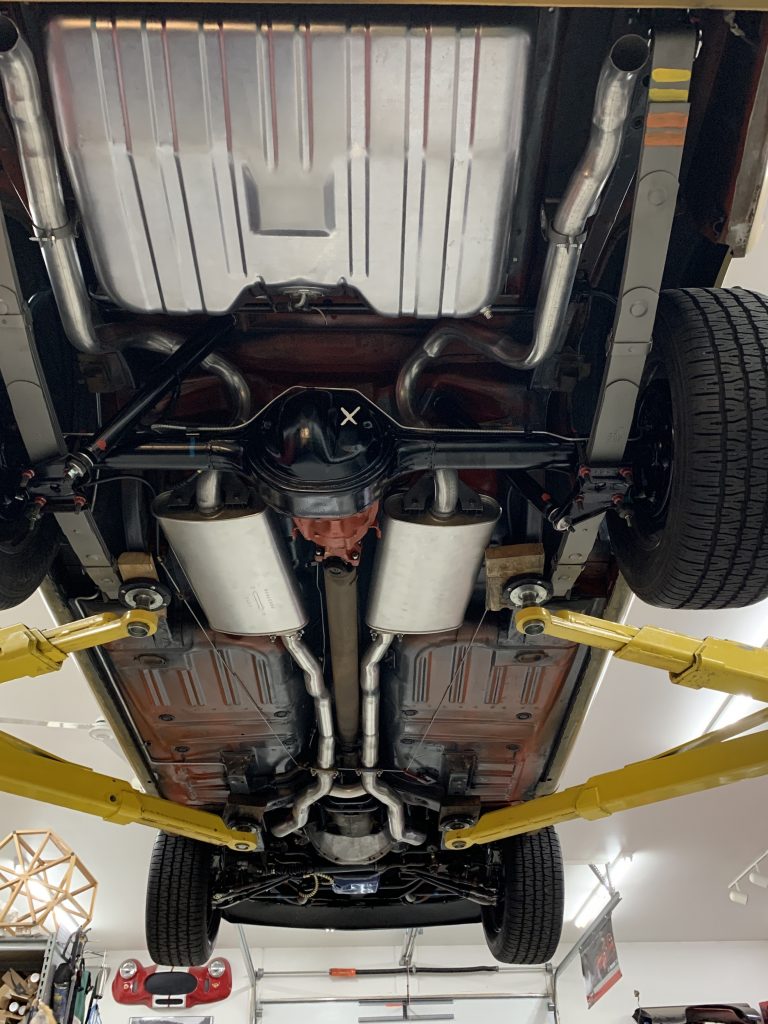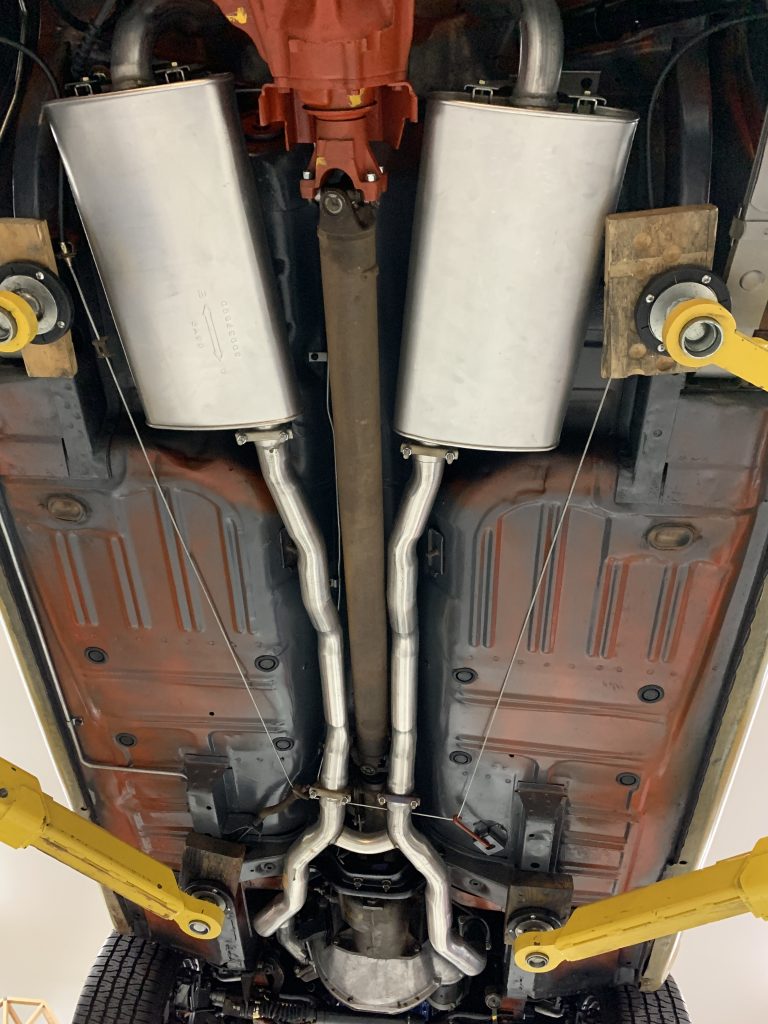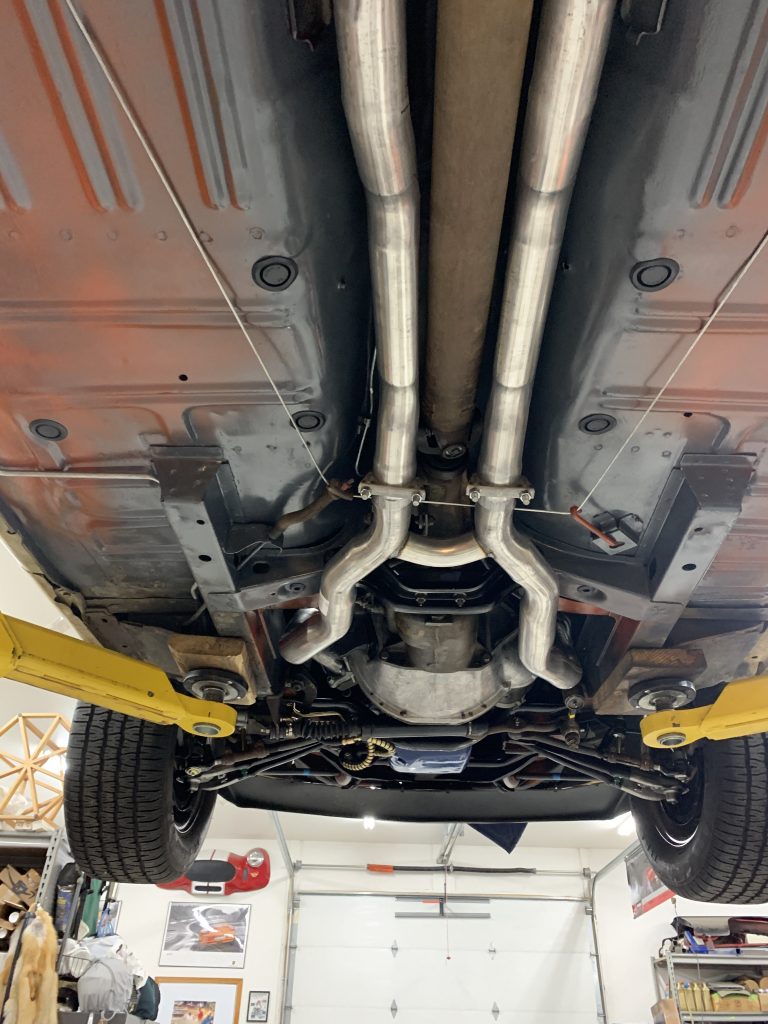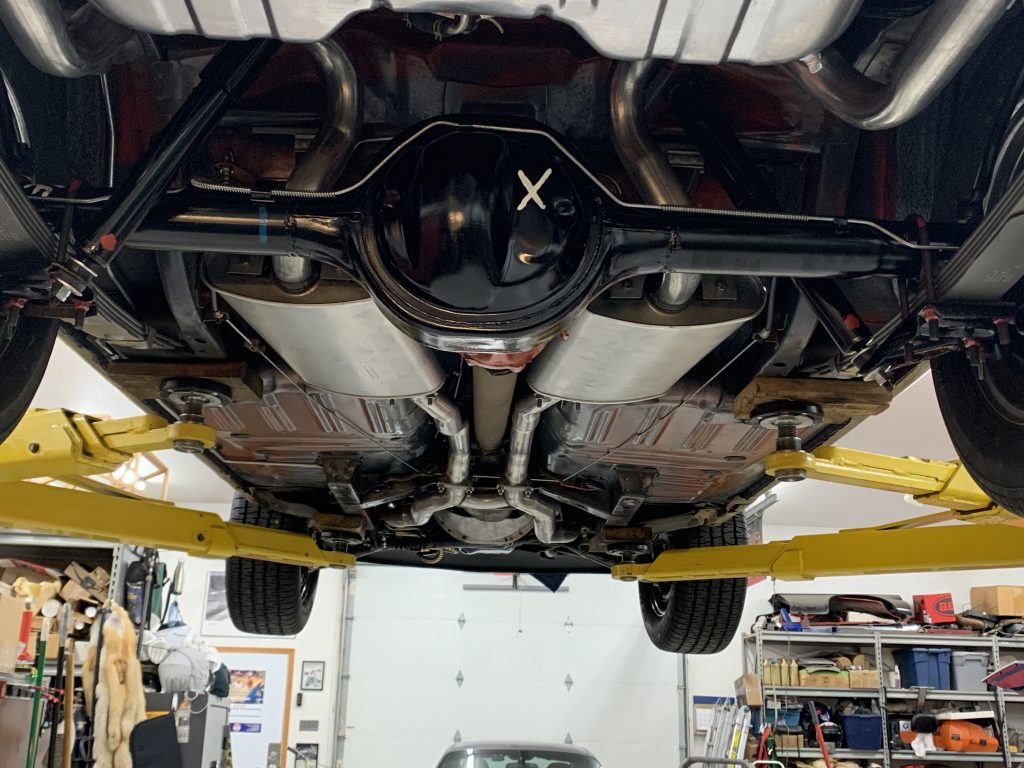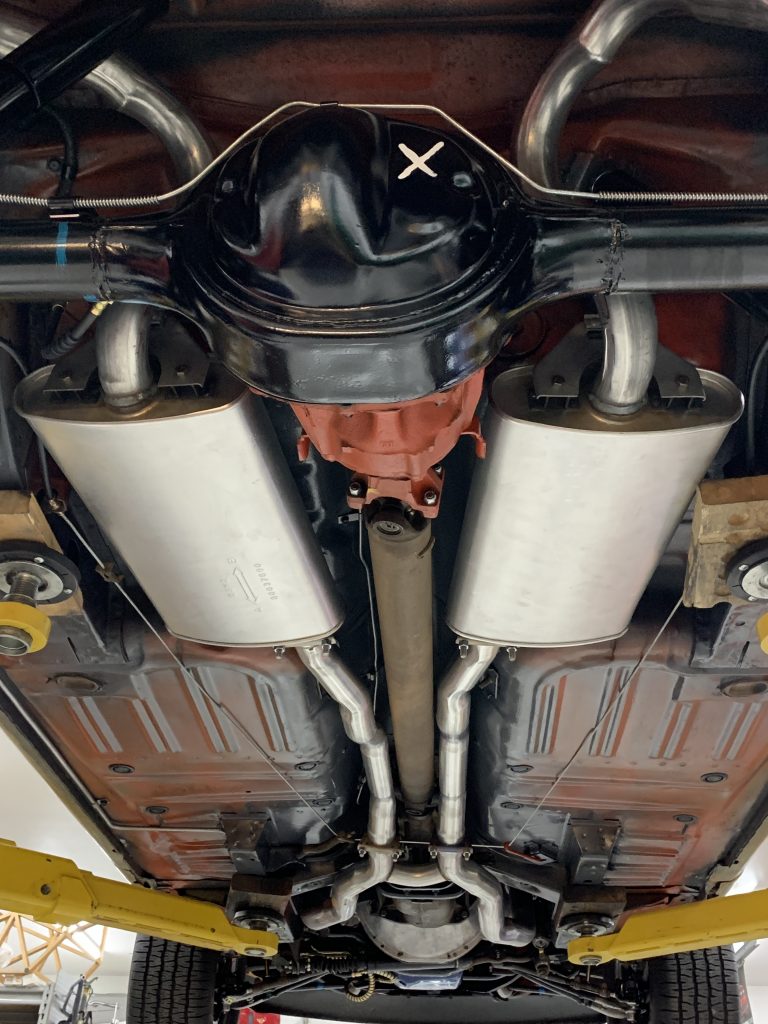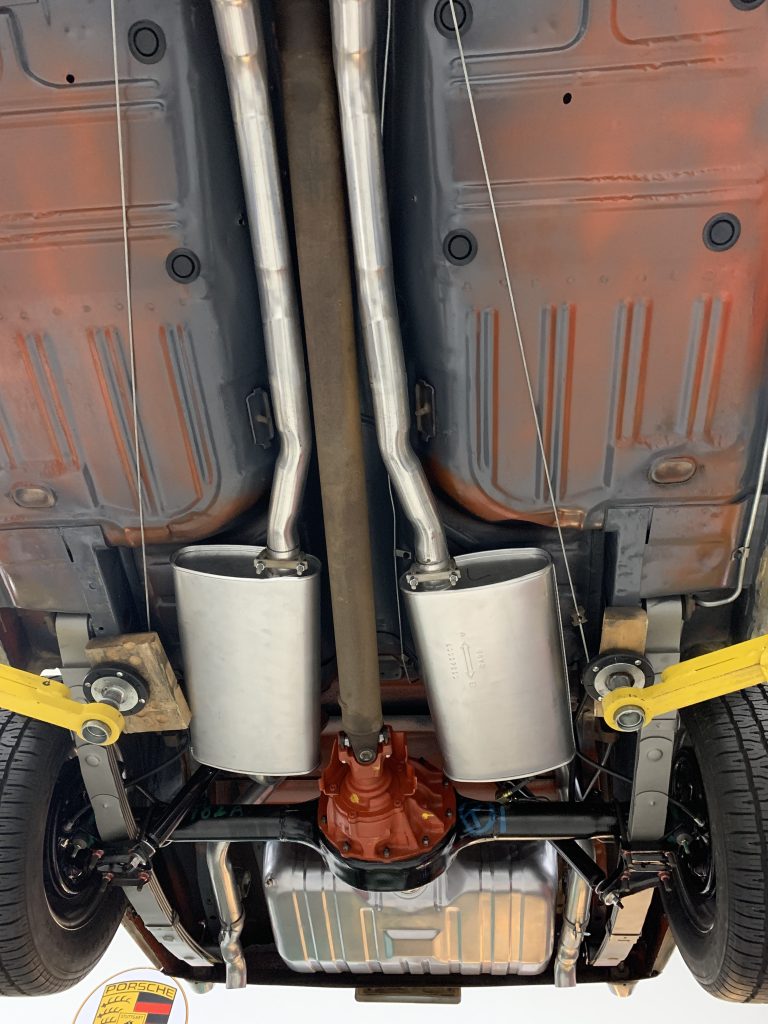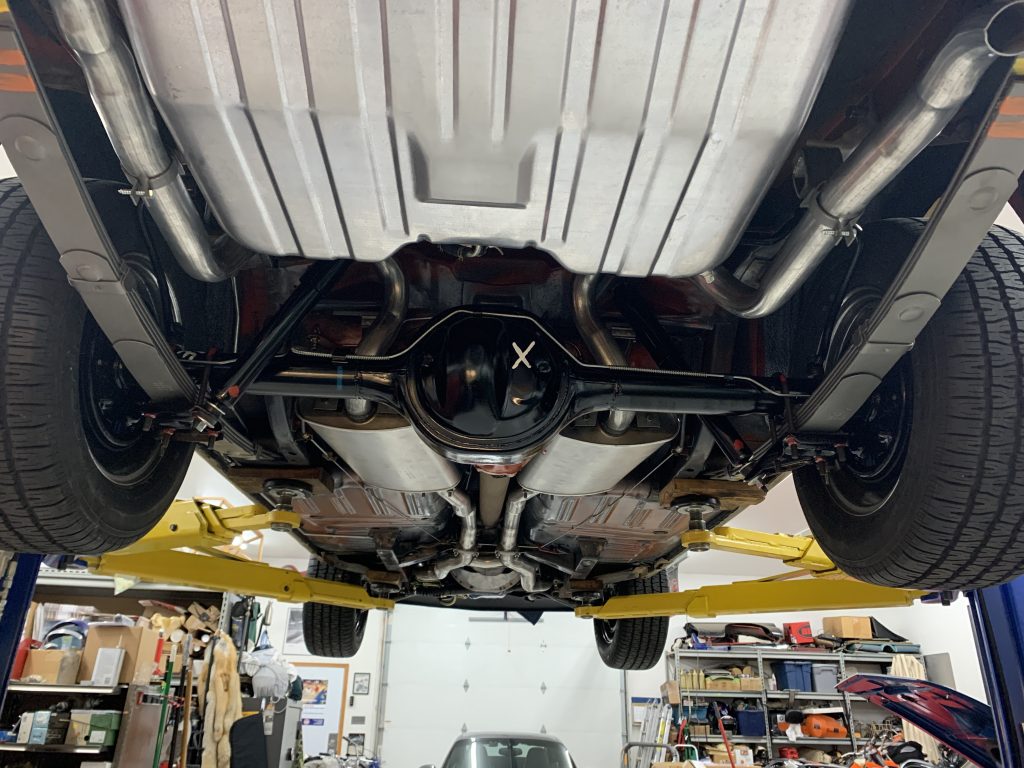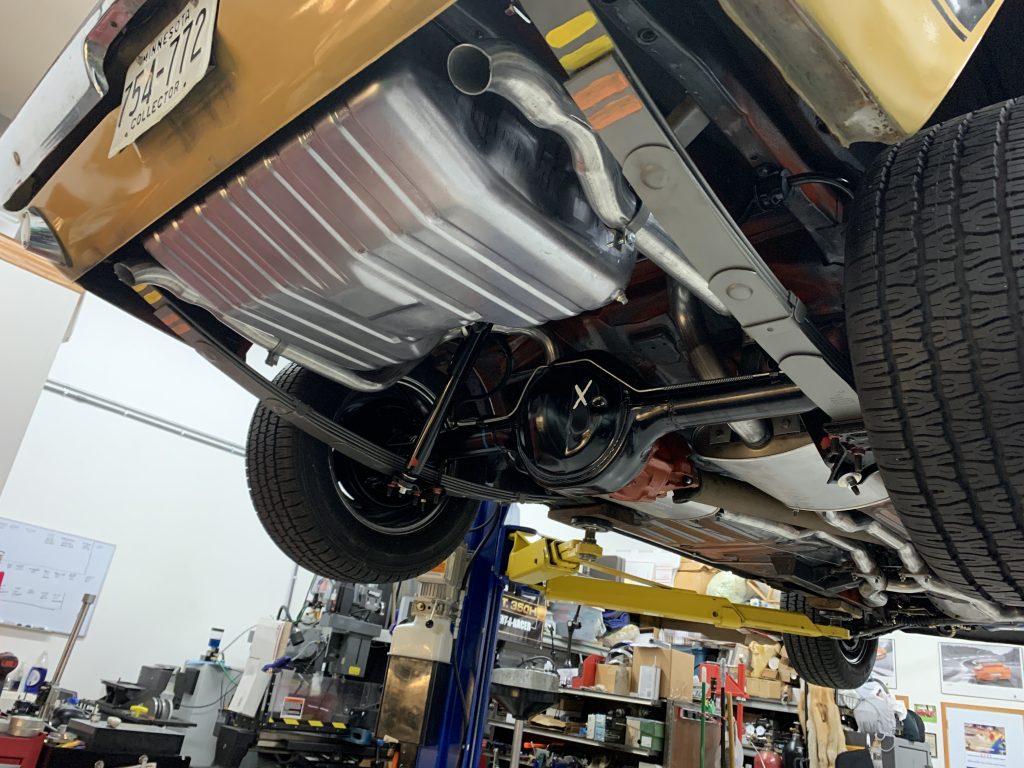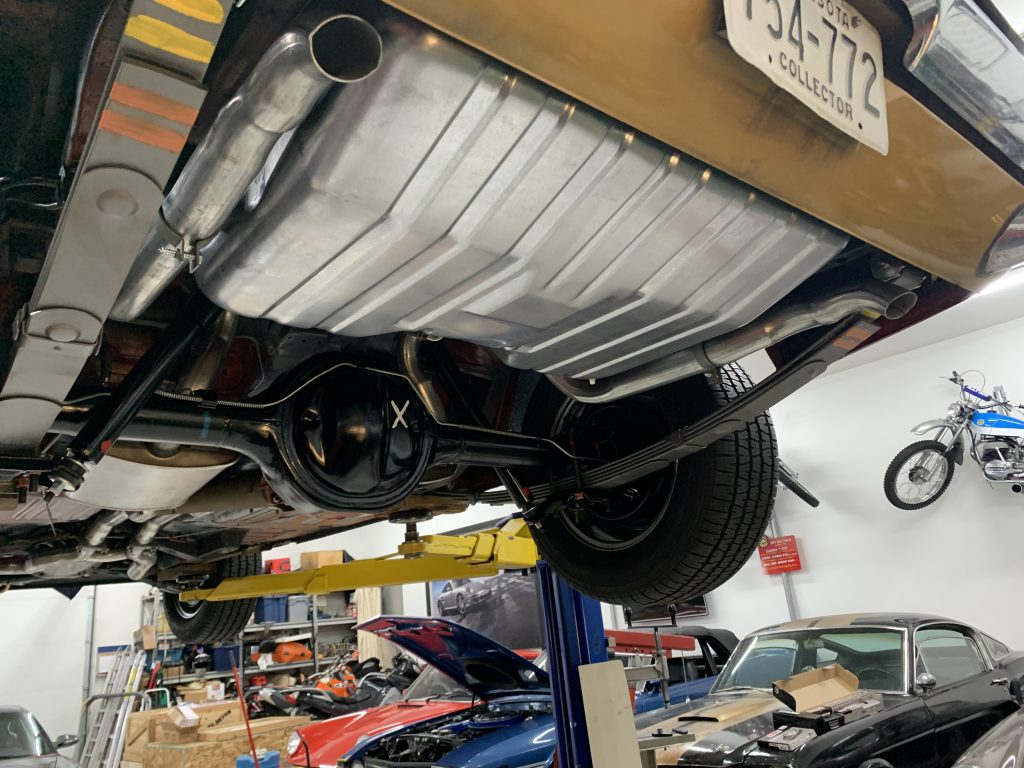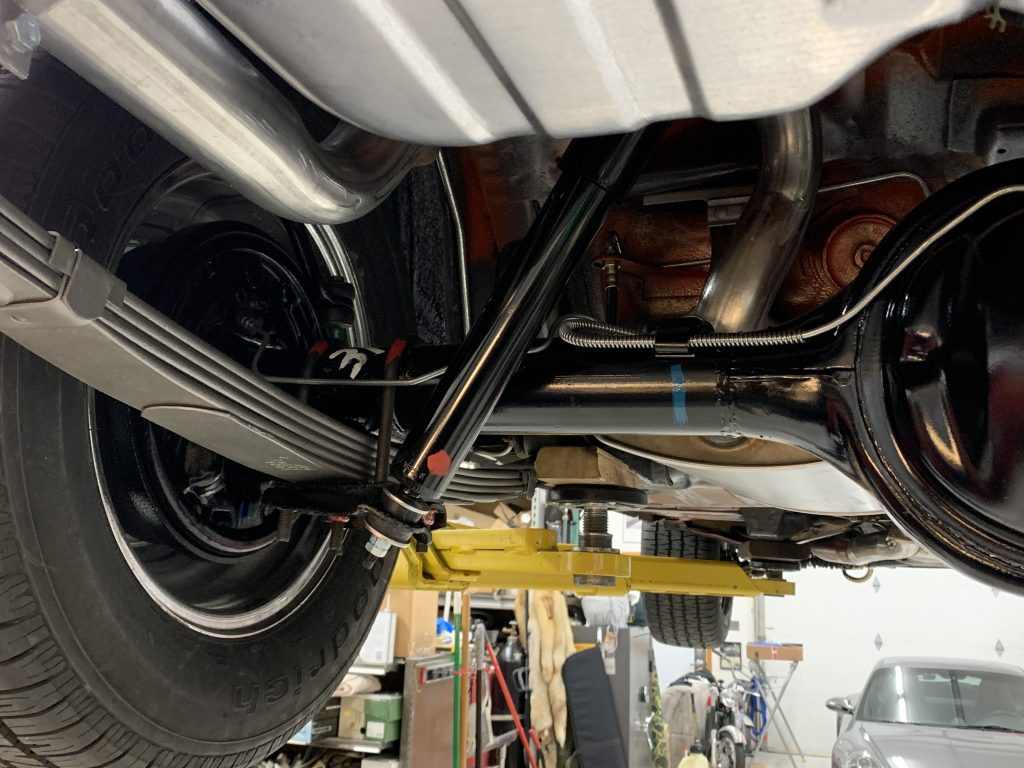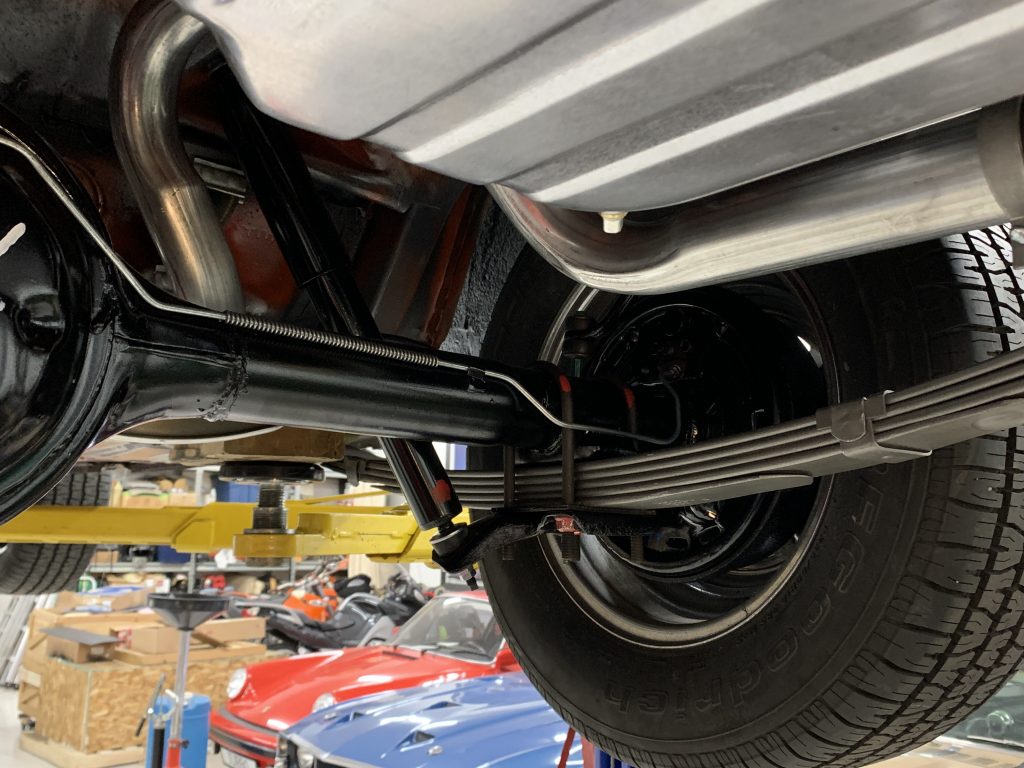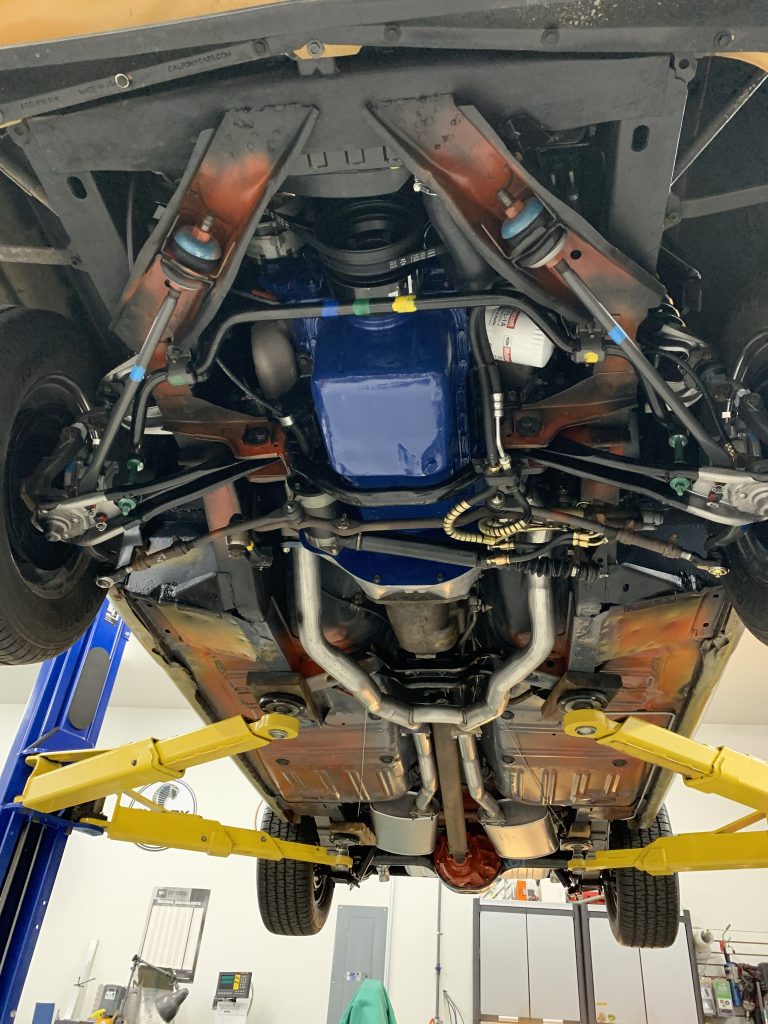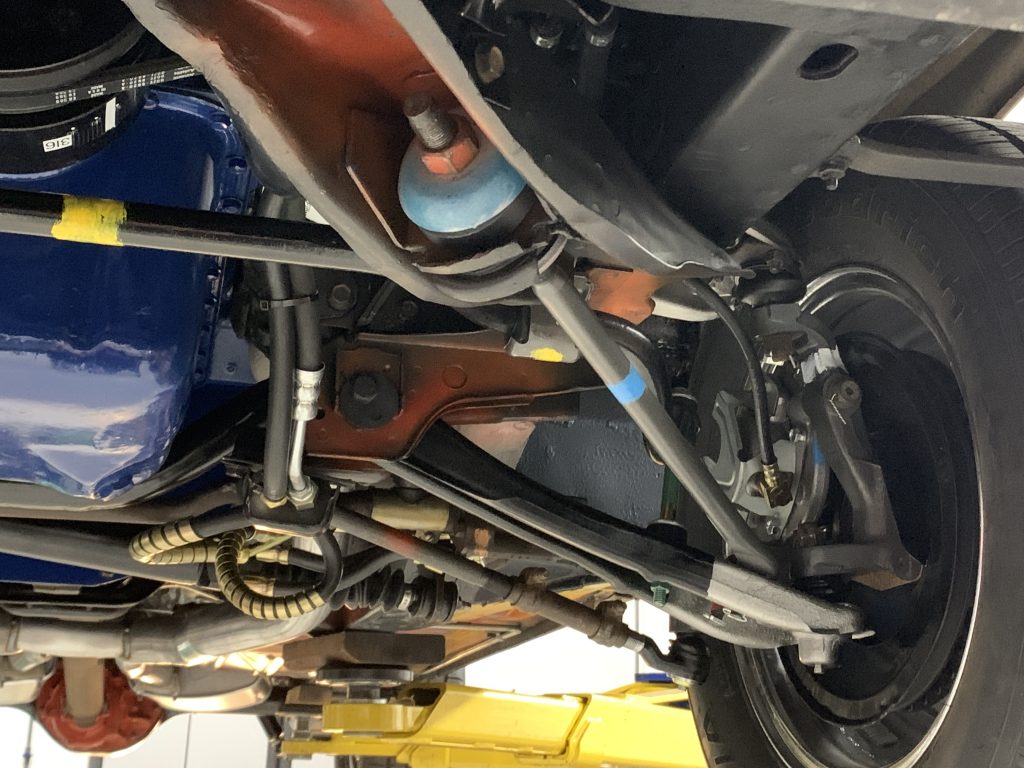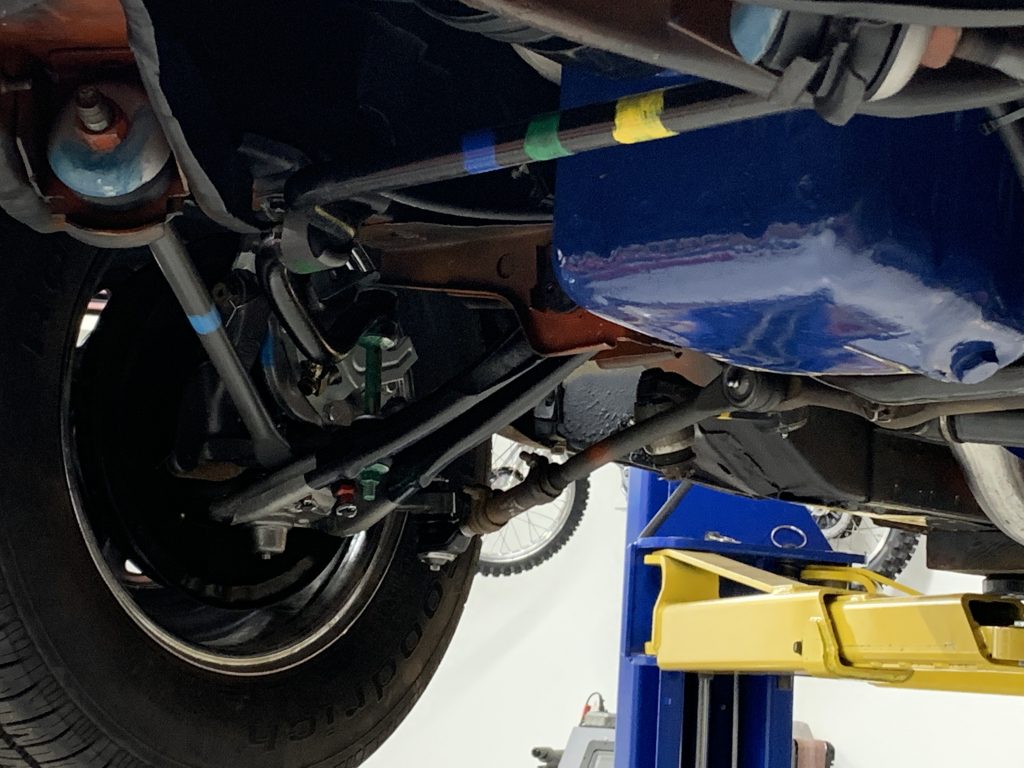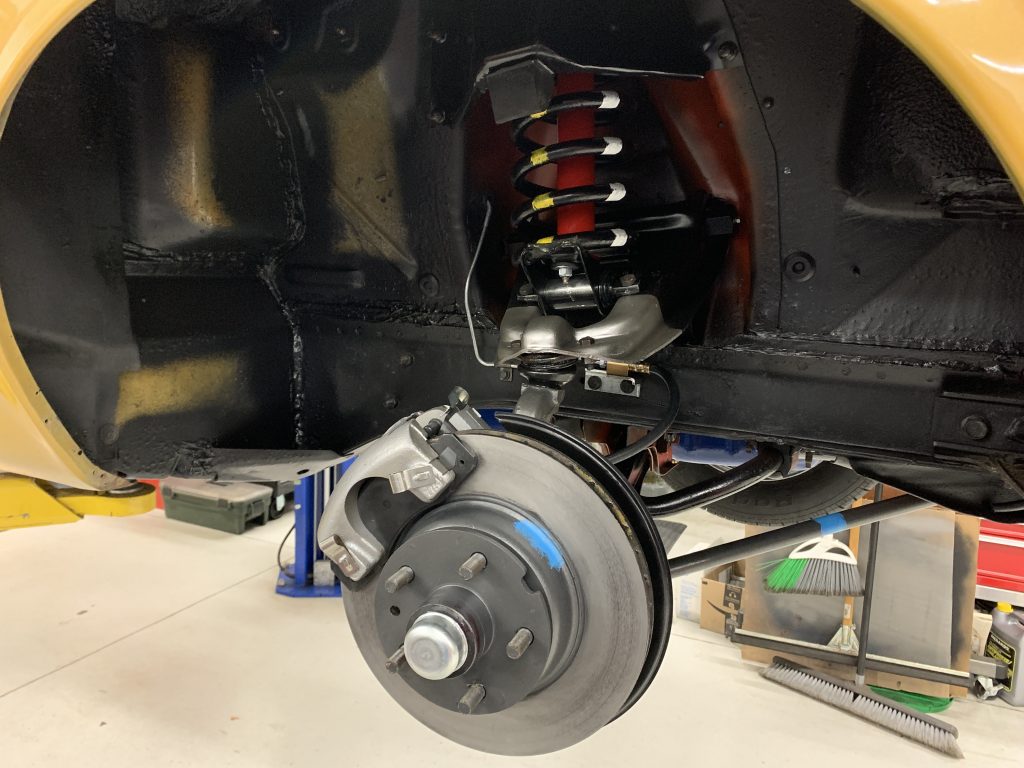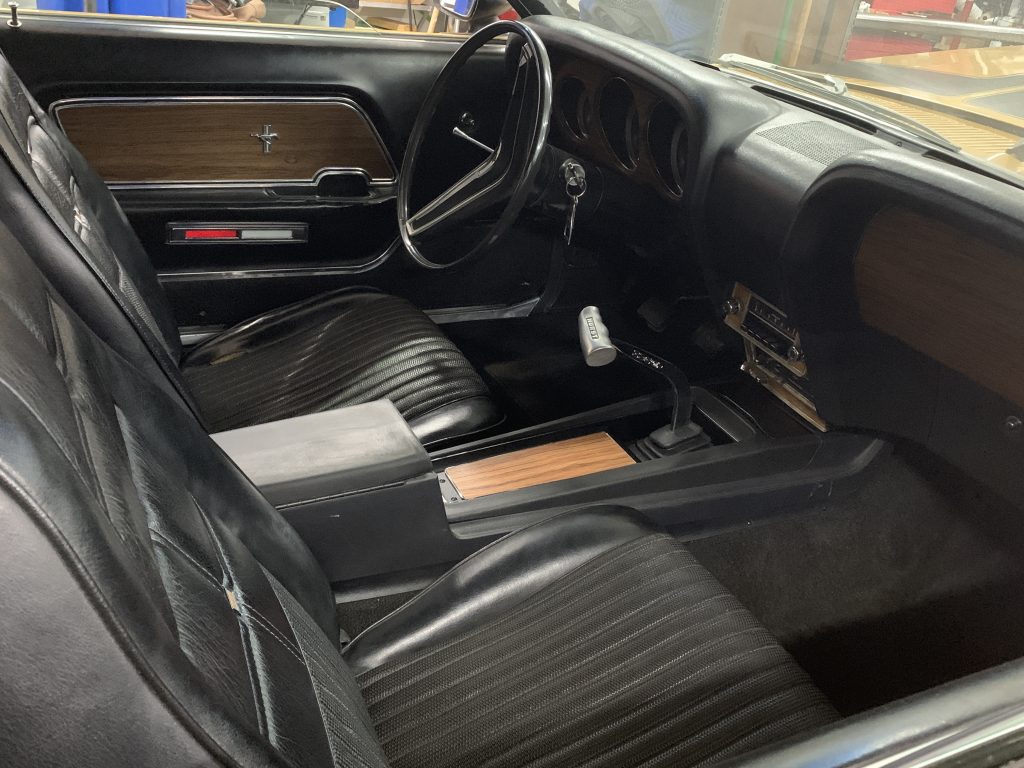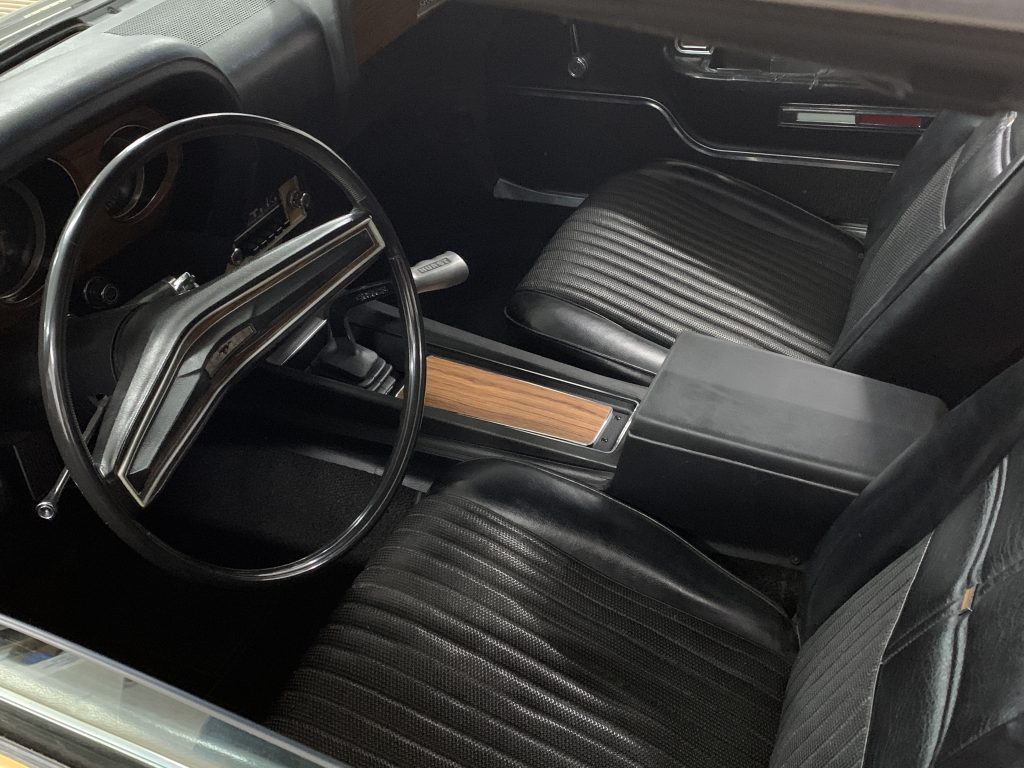1970 Boss 302, metallic gold, black deluxe interior, center console, shaker, spoiler, slats, front spoiler, magnum 500 wheels, close ratio 4 speed, 3.91 traction loc.
Boss 302 Engine
The engine that was in this Boss 302 when I got it was a 351W. I knew when I bought the car that a real Boss 302 engine would have to make its way into the engine bay. After much searching I found a Boss motor and after doing a complete rebuild the project is complete. The engine and engine bay are looking much better now. Nothing beats the sound of a Boss 302 with it’s solid lifters!
-
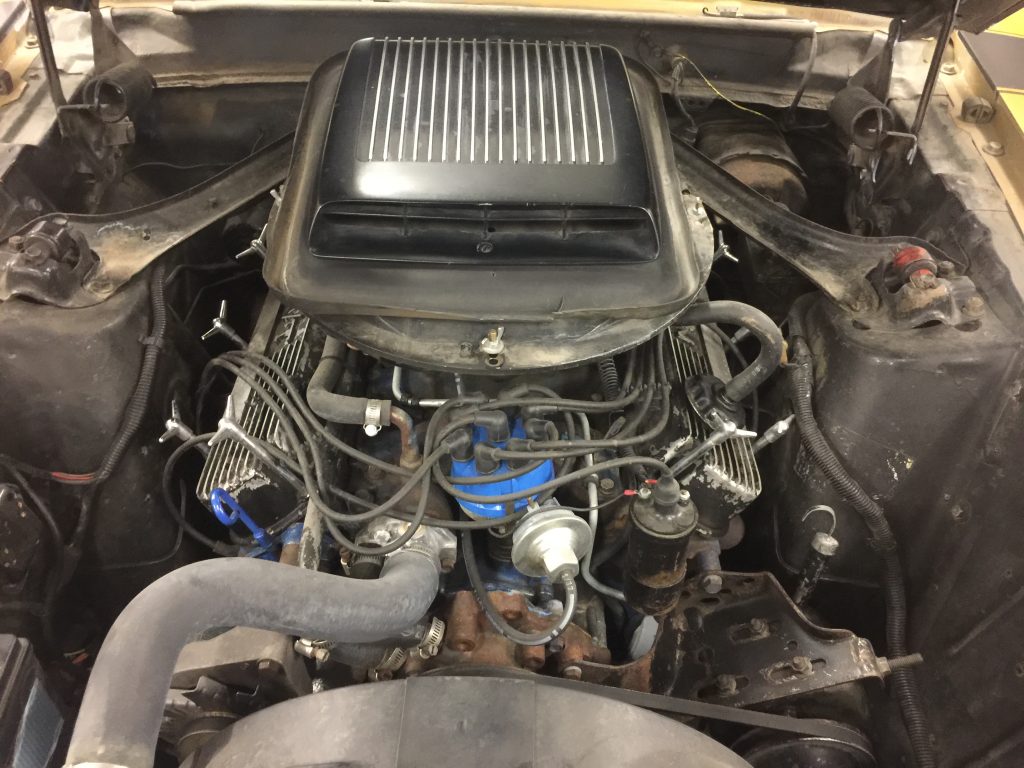
351W Before -
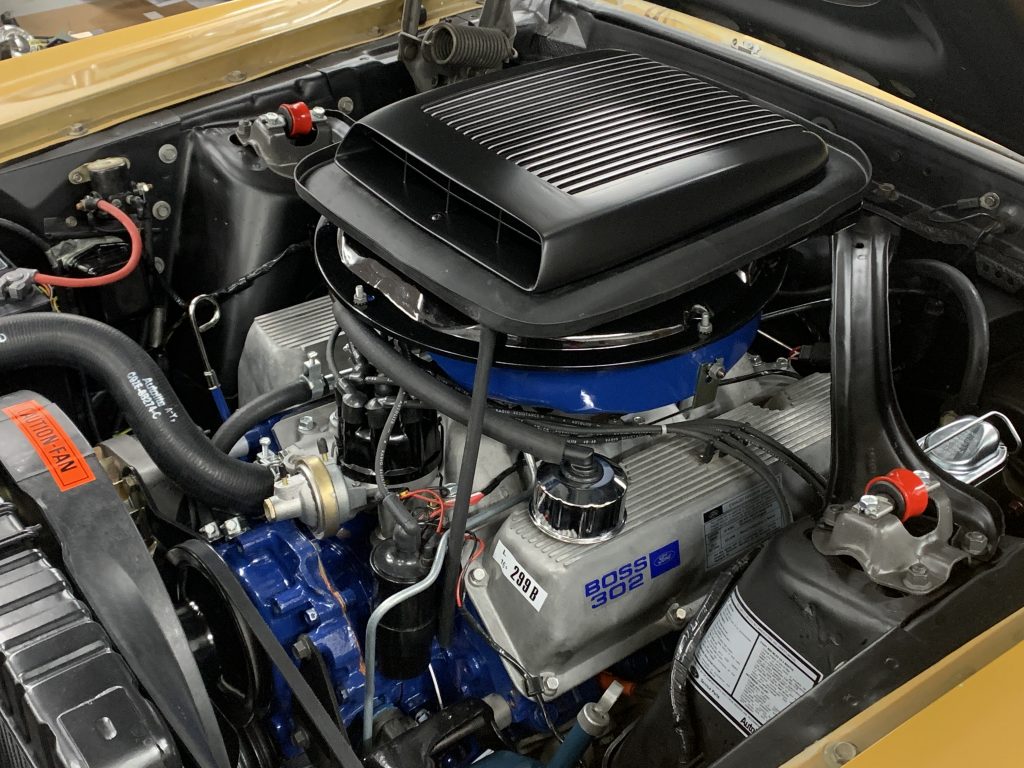
Boss 302 After -
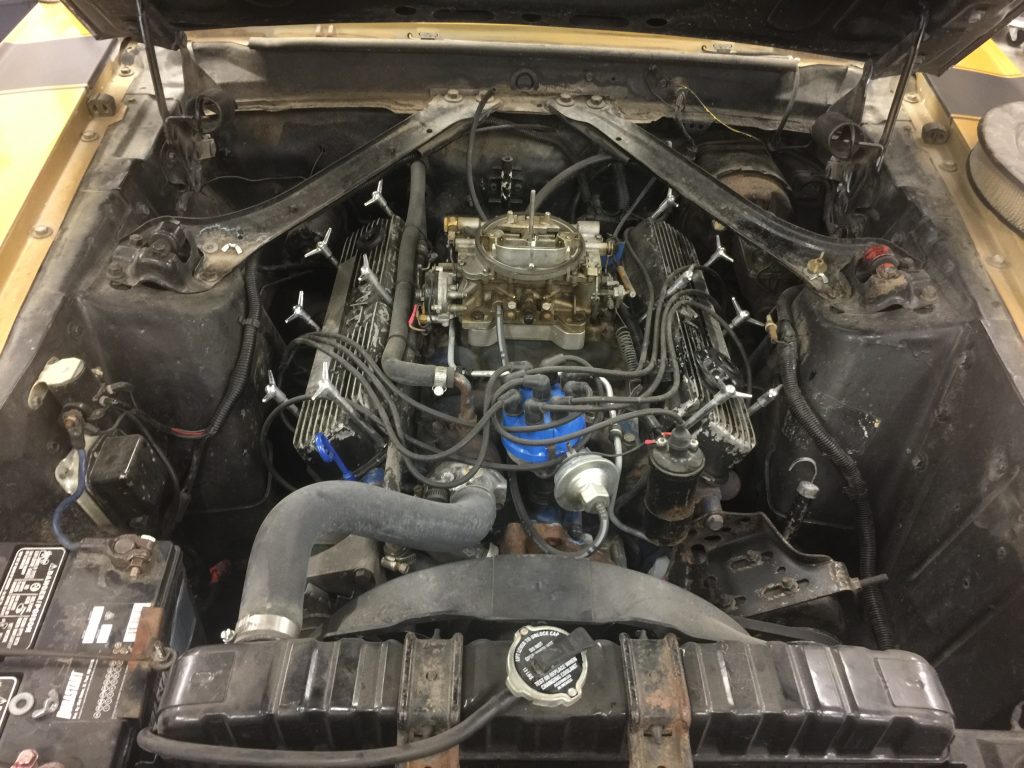
Engine before -
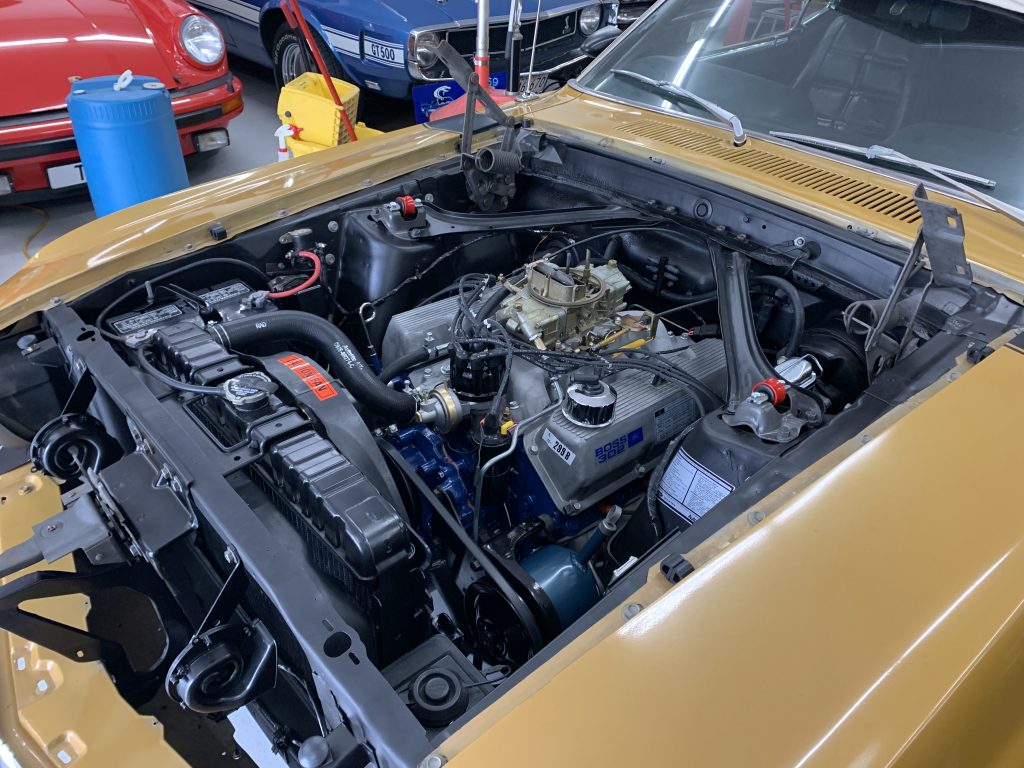
Engine after -
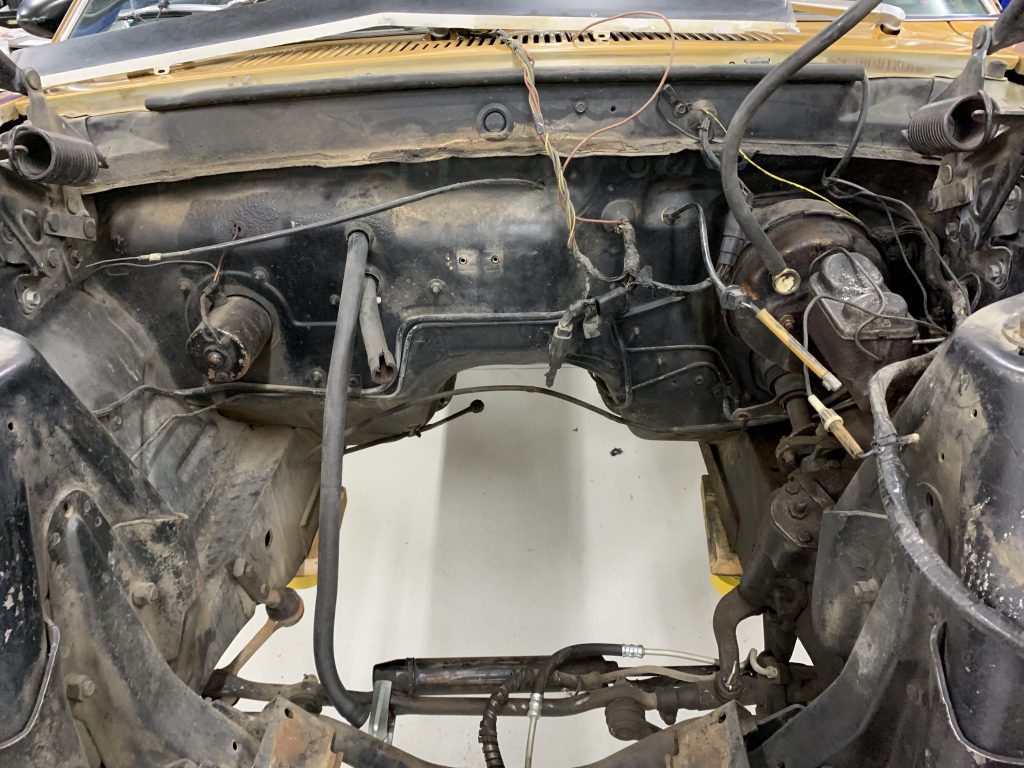
Engine Compartment before -
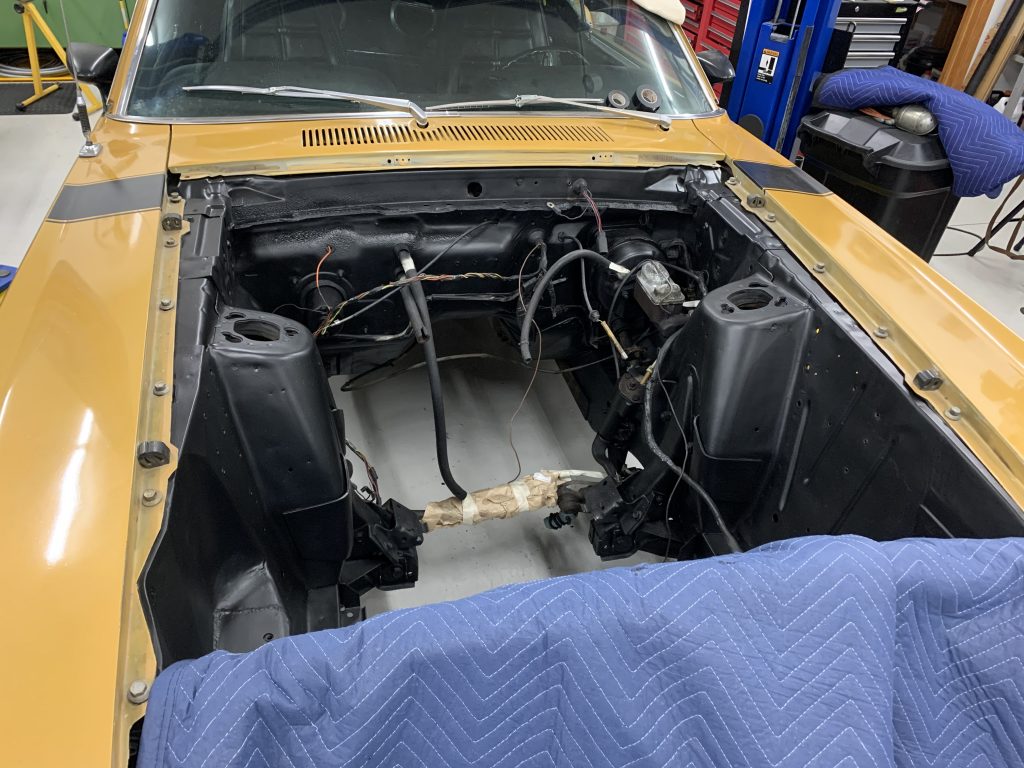
Engine compartment after -
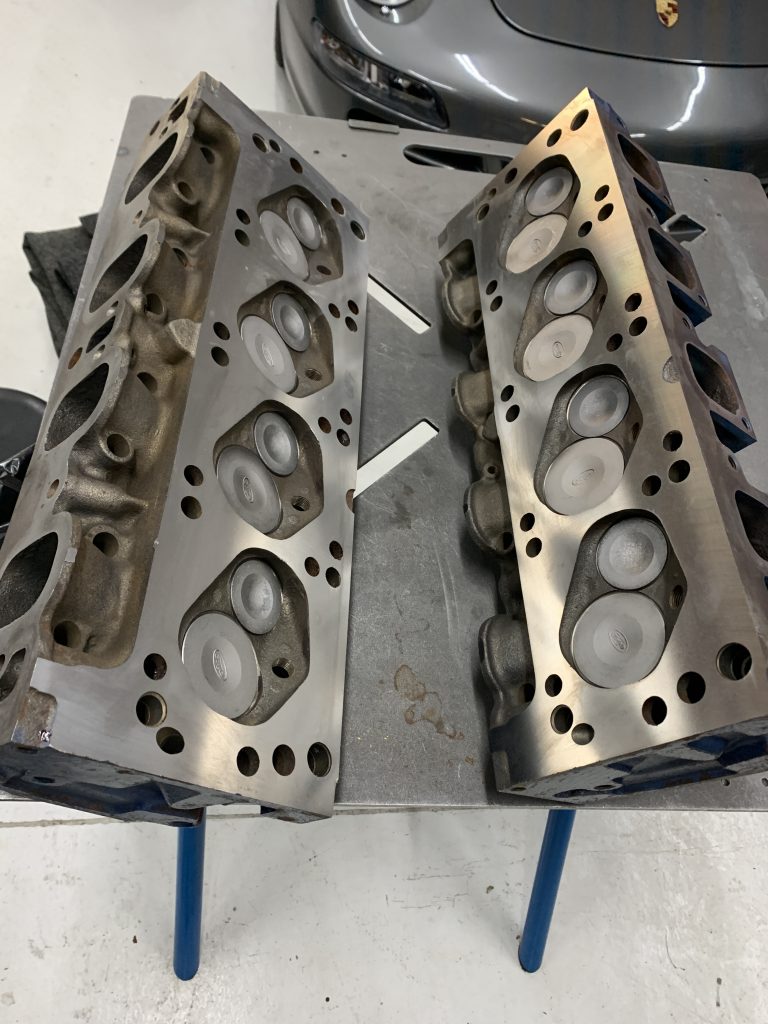
Reconditioned Heads -
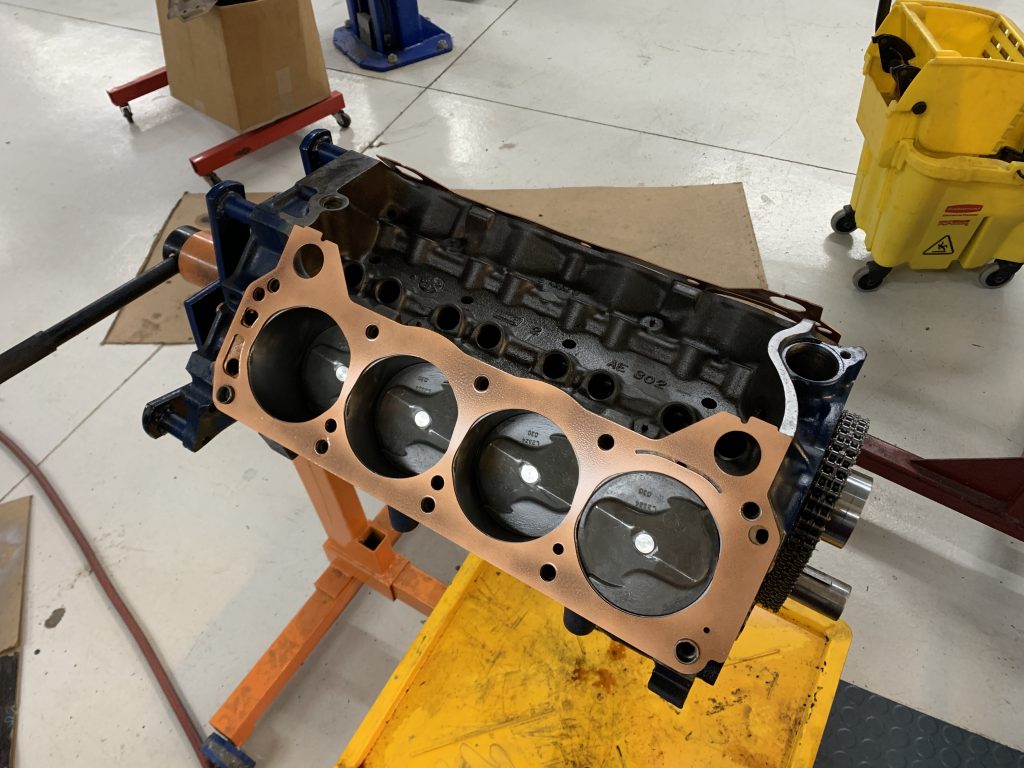
O-ringed block with copper head gaskets -
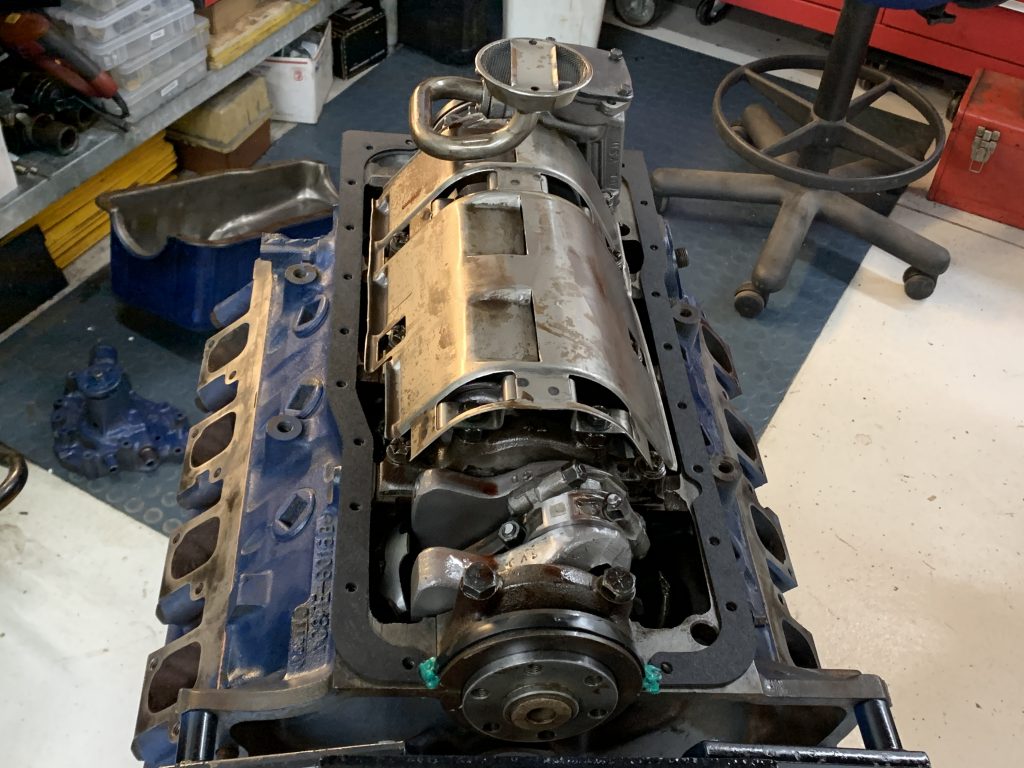
Windage tray installed -
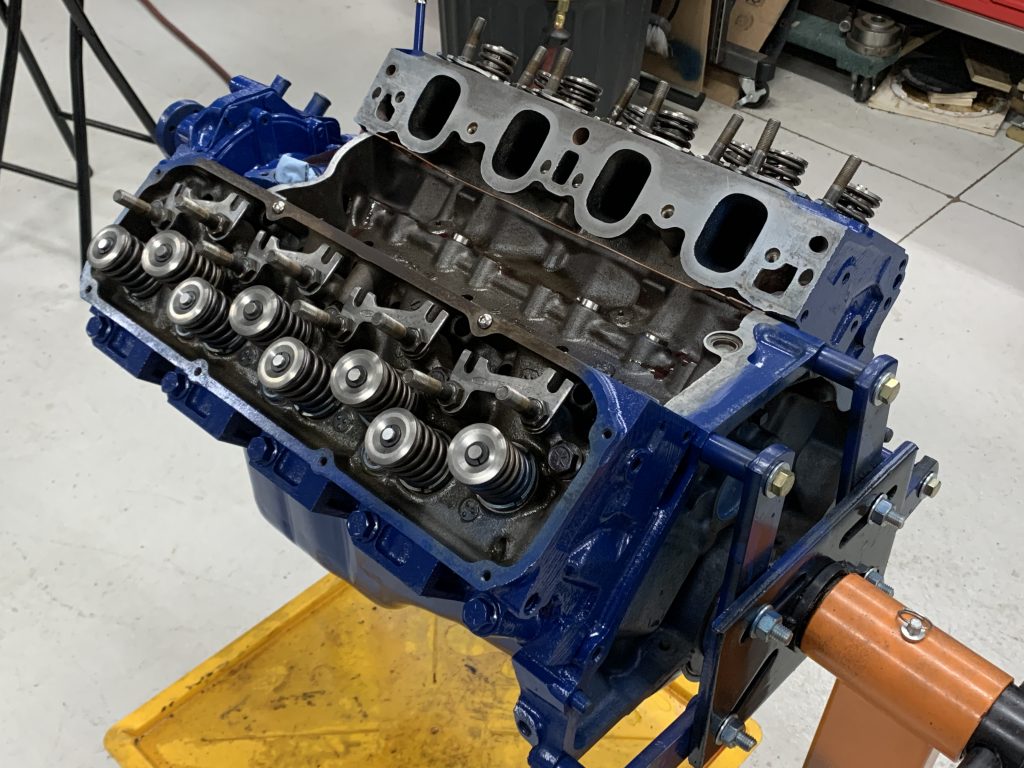
Boss 302 factory heads have massive ports -
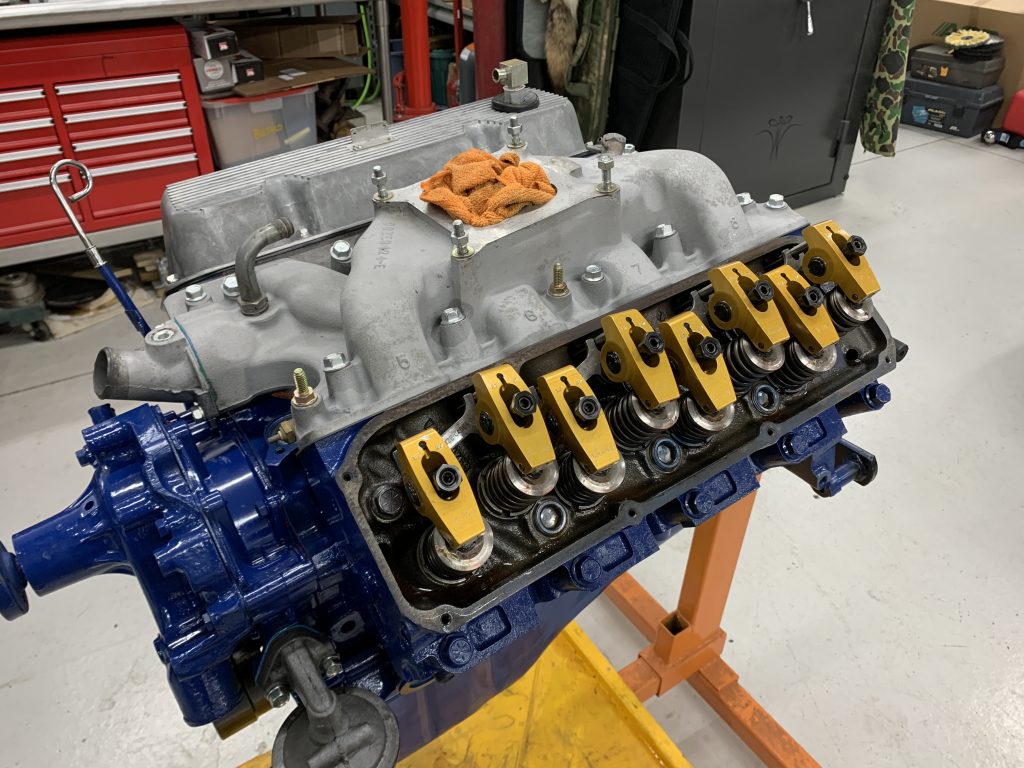
Crane 1.7 Roller rockers & Crower #15458 solid roller cam -
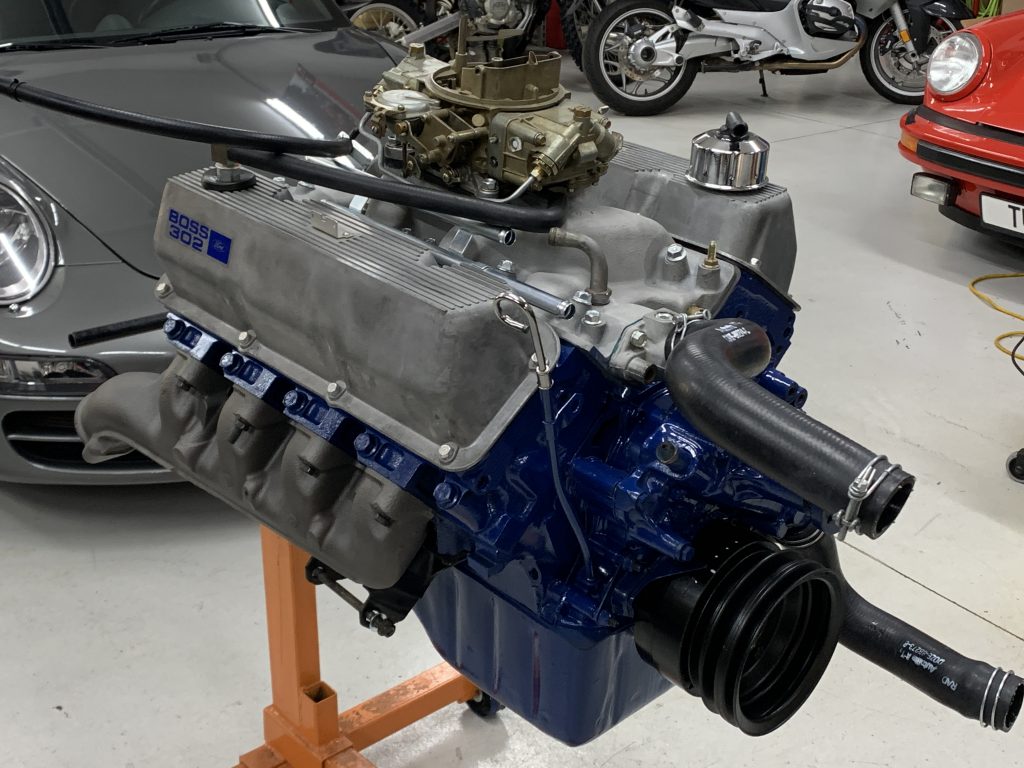
Factory intake and exhaust manifolds. Engine ready to install.
Undercarriage
Undercarriage has been nicely restored. Details include 3.91 ratio nodular 9 inch rear end with staggered shocks, rear sway bar and factory style exhaust. During the process the entire front and rear suspension was removed for cleaning, sandblasting and painting or re-finishing.
Interior
Deluxe interior including decor bucket seats, deluxe door panels, fold down seat with pass through trap door, center console, tachometer and Philco AM radio.
Marti report
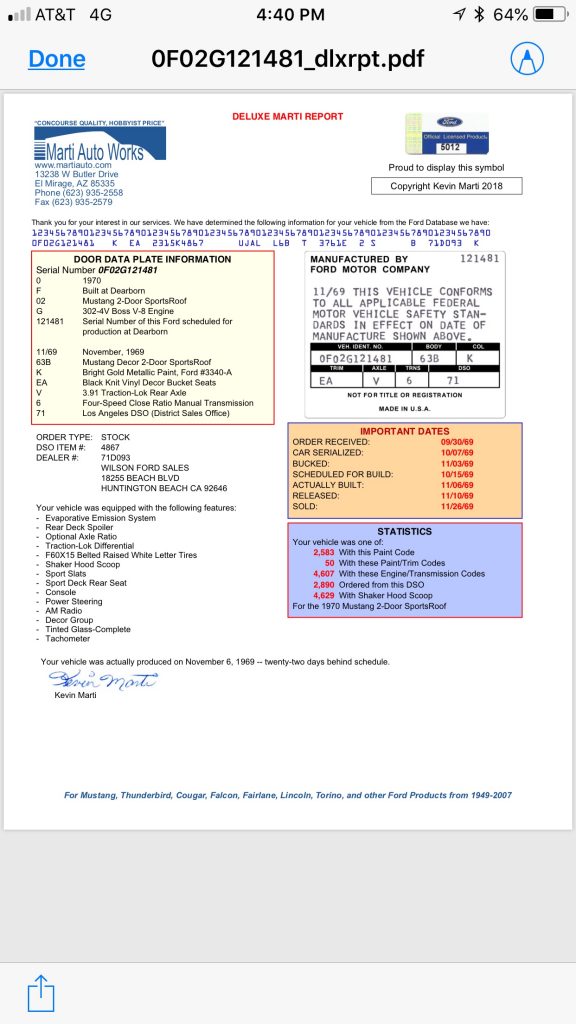
1970 Boss 302 history
The Boss 302 Mustang was designed by Larry Shinoda, a former GM employee. The car featured a reflective “c-stripe”. The fake air scoops in the rear quarter panel fenders of the regular production 1969 Mustangs were eliminated on the Boss 302 models. A black horizontal rear window shade and a blackout hood were both options. It was one of the first production models with a front spoiler and rear deck wing. The name “Boss” came about when Shinoda was asked what project he was working on, he answered “the boss’s car” because the project was a secret.[3] Also Shinoda had called it the “Boss” as an homage to the new President of Ford Semon “Bunkie” Knudson who had brought Shinoda over from GM’s Chevrolet Division after Knudson had left.
In addition to a lower ride height, standard equipment included front disc brakes, larger sway bars, heavier duty spindles, reinforced shock towers, a four speed manual transmission, and the solid-lifter Boss 302 V8 engine, with its free-breathing Cleveland style heads, which had valves larger than most engines more than a third larger in displacement.[5] This “G Code” engine was rated at 290 hp (216 kW).
Changes for the 1970 model year included side “hockey stick” stripes which started along the top of the hood, along with the 1970 grille which replaced the four headlights with two vents in the outside position while retaining dual headlights within the grille opening. The dual exhaust system was redesigned, along with the competition suspension and a standard Hurst shifter. The intake valves were slightly smaller, and cast aluminum valve covers replaced the chrome.[4] With a suggested price of $3,720, a total of 7,013 were sold.
Performance
The 1970 model could accelerate from 0 to 60 mph (97 km/h) in 6.9 seconds, and the quarter mile (~400 m) took 14.6 seconds, reaching a speed of 98 mph (158 km/h).[4]
Although Ford’s Drag Pack option with a special oil cooler was never formally offered on the Boss 302, it was often included with the 4.30:1 rear axle ratio. This coveted option is recognizable when the hood is opened to reveal Ford’s vertically mounted oil cooler in front of the radiator. Ford also had an option for Boss 302’s and 429’s for deluxe interior rather than standard interior

